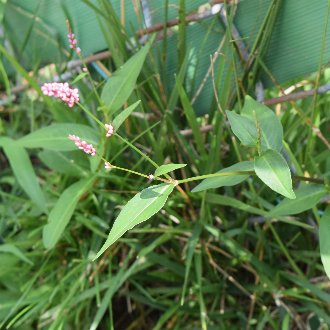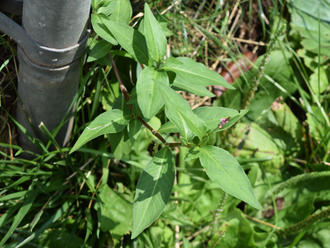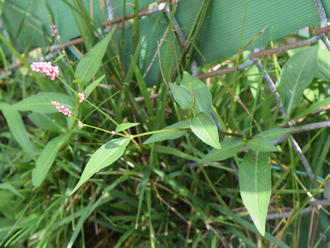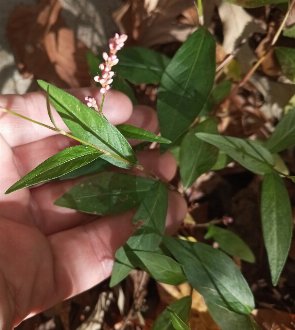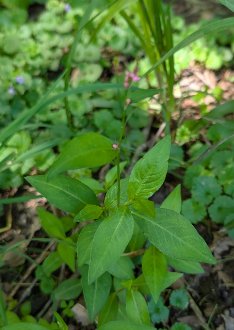Low Smartweed (Persicaria longiseta (Bruijn) Kitag.)
Also known as creeping smartweed, Oriental smartweed, Oriental lady's thumb, bristly lady's thumb, Asiatic smartweed, long-bristled smartweed, Asiatic waterpepper, bristled knotweed, bunchy knotweed, tufted knotweed; also classified as Polygonum caespitosum var. longisetum, Polygonum cespitosum var. longisetum.
↑Summary
An annual native to east Asia, widely introduced in North America where it is common in suburban gardens and disturbed urban habitats, and occasional in more intact wild ecosystems.
↑Range - Expand
| Legend | Color |
| Introduced | |
| Introduced or Not Present |
This tentative map is based on our own research. It may have limited data on Canada and/or Mexico, and there is some subjectivity in our assignment of plants as introduced vs. expanded. Read more in this blog post.
Although this plant occurs somewhere in each of these regions, it may only occur in a small part of some or all of them.
↑Description & Identification
Looks similar to other Persicaria species; the most distinctive features are the decumbent (sprawling and only weakly upright) growth habit and the long bristles on the sheaths beneath the inflorescence and also where leaves meet the stems.
↑Similar Plants
↑Links & External Resources
• Persicaria longiseta (Creeping Smartweed) | Illinois Wildflowers (About This Site)
• Persicaria longiseta (Oriental Lady's Thumb) | USDA PLANTS Database (About This Site)
• Persicaria longiseta | Go Botany (About This Site)
• Persicaria longiseta | Biota of North America Project (BONAP) (About This Site)
• Persicaria longiseta | Flora of North America (About This Site)
• Persicaria longiseta | Missouri Plants (About This Site)
• Oriental Smartweed | Maryland Biodiversity Project (About This Site)
• Persicaria longiseta (Oriental Lady's-thumb) | Minnesota Wildflowers (About This Site)
• Persicaria longiseta (Bruijn) Kitagawa (Long-bristled Smartweed, Bristly Lady's-Thumb) | Digital Atlas of the Virginia Flora (About This Site)
• Persicaria longiseta (Bruijn) Kitag. | Plants of the World Online (POWO) (About This Site)



